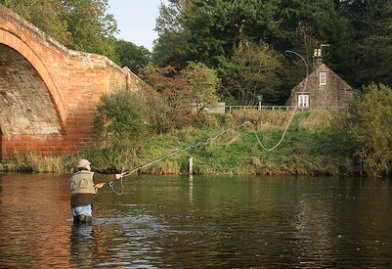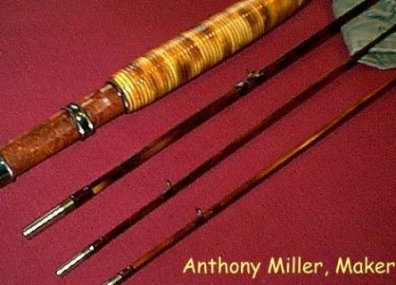
Fly Fishing Rods. The good. The bad. The Difference.
"If you really want something in this life, you have to work for it - Now quiet, they're about to announce the lottery numbers!"
- Homer Simpson
There are so many different kinds of fly fishing rods it’s amazing how so many manufacturers area able to find a market for their products.
You can find rods priced from $20. and all the way up to $2,000. And higher. So what really is the difference.
The material of which the rod is made is important in the overall price but workmanship and design plays an integral part as well.
Fishing rods is a general term. Every rod could be called a fishing rod because that is what they are used for. Certain rods are made for different species of fishing.
The fish hasn’t a clue, and could care less, what the bait, lure, or fly it sees in the water is attached to. All it cares about is food and that thing looks like the next meal.
So the question arises, if the fish doesn’t care, why not just buy a cheap rod, hook on a worm, lure, or fly and go fishing?
Well, that’s not so easily answered.
First, you can do so where bait is allowed. Certain areas restrict or ban bait fishing all together.
Second, certain species of fish do not eat at times. The salmon on it’s way from the ocean to the spawning grounds does not eat. Trout will eat sometimes and not others. Weather and water temperature play a part in the feeding habits of these fish as well.
Many more reasons apply to other species but for this page, we will stick to trout and salmon fishing rods.
Fly fishing rods are thin, flexible fishing rods designed to cast a very lightweight fly. Antique rods were made of wood (yew, greenheart) and split bamboo. Most modern rods are now made of composite materials such as fiberglass, carbon/graphite and other composites like graphite/boron.
Instead of a lure, a fly rod uses a weighted line to cast a very light fly amazing distances.
Fly rods come in a wealth of sizes, their use depending upon the size and type of fish being fished. Most fly rods have little or no butt (the end of the rod behind the reel) so as to prevent interference while casting.
Pictured here is a Hardy Graphite Rod. One of the best.
Most fly rod builders use carbon graphite for it’s strength and flexibility. The problem is to create the graphite pattern in such a way that the rod will keep from flattening when stressed or bowed. The rod is tapered from end to end and the degree of taper relates to how much the rod flexes while being stressed.
All of these factor into the distance the rod is able to cast a fly and the manner the fly is presented to the fish. Computers are used during the testing to determine the best design. They determine the Linear and Rotational Variability of the rod and dictate to the rod builder where to place the guides on the rod.
Fenwick Rods
Pictured here is a handmade Split Bamboo rod.
 Long considered the ultimate fly rod, hand made split bamboo
Long considered the ultimate fly rod, hand made split bamboo
They treat the wood as if it were alive in their hands. The techniques used by some builders are amazing. The care and attention to detail is amazing in the hand made fly fishing rods.
My dad was a great trout fisherman. He had a couple of split bamboo rods. We fished in the Mira river area of Cape Breton Island for years. It was a pleasure to watch him assemble and disassemble his rod. It didn’t matter if it was pouring rain or sunshine, he would remove each piece from it’s sock, rub it down a little, assemble each piece with a reverence befitting a masterpiece and attach the reel. He loved it.
Whatever the rod you choose, you are about to enter the wonderful world of sport fishing. Treat your rods and gear well and it will serve you for a good many years.

Return from Fly fishing Rods to Whistler Outdoors



